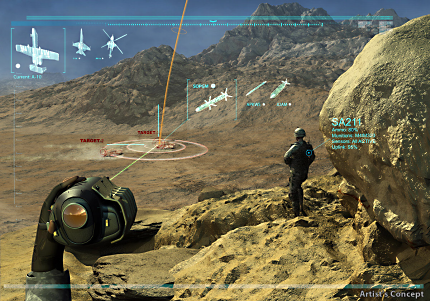Flight tests begin on system to speed up air strikes
DARPA's Persistent Close Air Support system links ground and air crews, allowing them to jointly select precision-guided weapons.

A research program designed to use real-time information sharing to significantly reduce the time it takes between calling in an airstrike and hitting a target has moved a step closer to battlefield deployment.
The Defense Advanced Research Projects Agency (DARPA) had planned to begin flight tests and live-fire demonstrations of its Persistent Close Air Support (PCAS) system earlier this year. System integrator Raytheon Co. said in early November it had begun flight-testing of PCAS under an 18-month, $25.5 million contract.
The phase-three test flights will focus on PCAS performance aboard an A-10 test aircraft along with connectivity with the Joint Terminal Attack Controllers (JTAC) network that allows ground spotters and aircrews to share real-time situational awareness and weapons data. The system lets ground and air crews jointly select precision-guided weapons, in some cases opting for smaller, more precise weapons against mobile targets.
The contractor added that a key element of the flight tests would be "modular smart launcher electronics" that can be ported from one platform to another.
Once the third-phase flight testing is completed under the DARPA contract, Raytheon said PCAS would be available for integration into other aircraft and future demonstrations.
Raytheon leads a contractor team that includes BAE Systems, General Electric, Rockwell Collins and 5-D Systems.
DARPA created the PCAS program in 2010 to improve close air support on the battlefield by enabling ground attack controllers to and combat aircrews to share weapons and situational awareness data in real time.
According to the DARPA program office, "The system would enable ground agents to quickly and positively identify multiple targets simultaneously. JTACs and aircrews would then jointly select precision-guided ordnance that best fits each target and minimizes collateral damage and friendly fire."
Ultimately, the R&D program seeks a tenfold decrease in the time needed to call in a strike to hitting the target, or from up to an hour to about six minutes, DARPA said.



